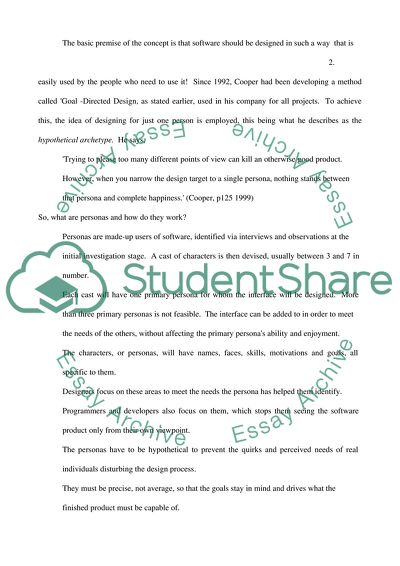Cite this document
(Alan Cooper's Concept of the Persona Essay Example | Topics and Well Written Essays - 2250 words, n.d.)
Alan Cooper's Concept of the Persona Essay Example | Topics and Well Written Essays - 2250 words. https://studentshare.org/information-technology/1703758-concept-of-the-persona-for-alan-cooper
Alan Cooper's Concept of the Persona Essay Example | Topics and Well Written Essays - 2250 words. https://studentshare.org/information-technology/1703758-concept-of-the-persona-for-alan-cooper
(Alan Cooper'S Concept of the Persona Essay Example | Topics and Well Written Essays - 2250 Words)
Alan Cooper'S Concept of the Persona Essay Example | Topics and Well Written Essays - 2250 Words. https://studentshare.org/information-technology/1703758-concept-of-the-persona-for-alan-cooper.
Alan Cooper'S Concept of the Persona Essay Example | Topics and Well Written Essays - 2250 Words. https://studentshare.org/information-technology/1703758-concept-of-the-persona-for-alan-cooper.
“Alan Cooper'S Concept of the Persona Essay Example | Topics and Well Written Essays - 2250 Words”. https://studentshare.org/information-technology/1703758-concept-of-the-persona-for-alan-cooper.


